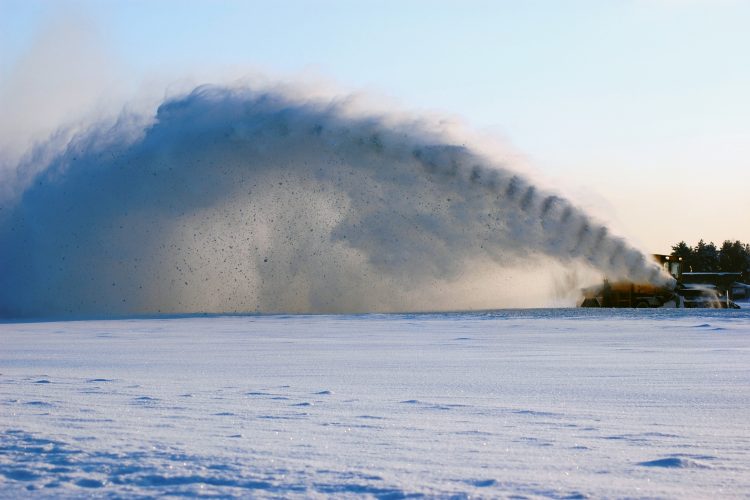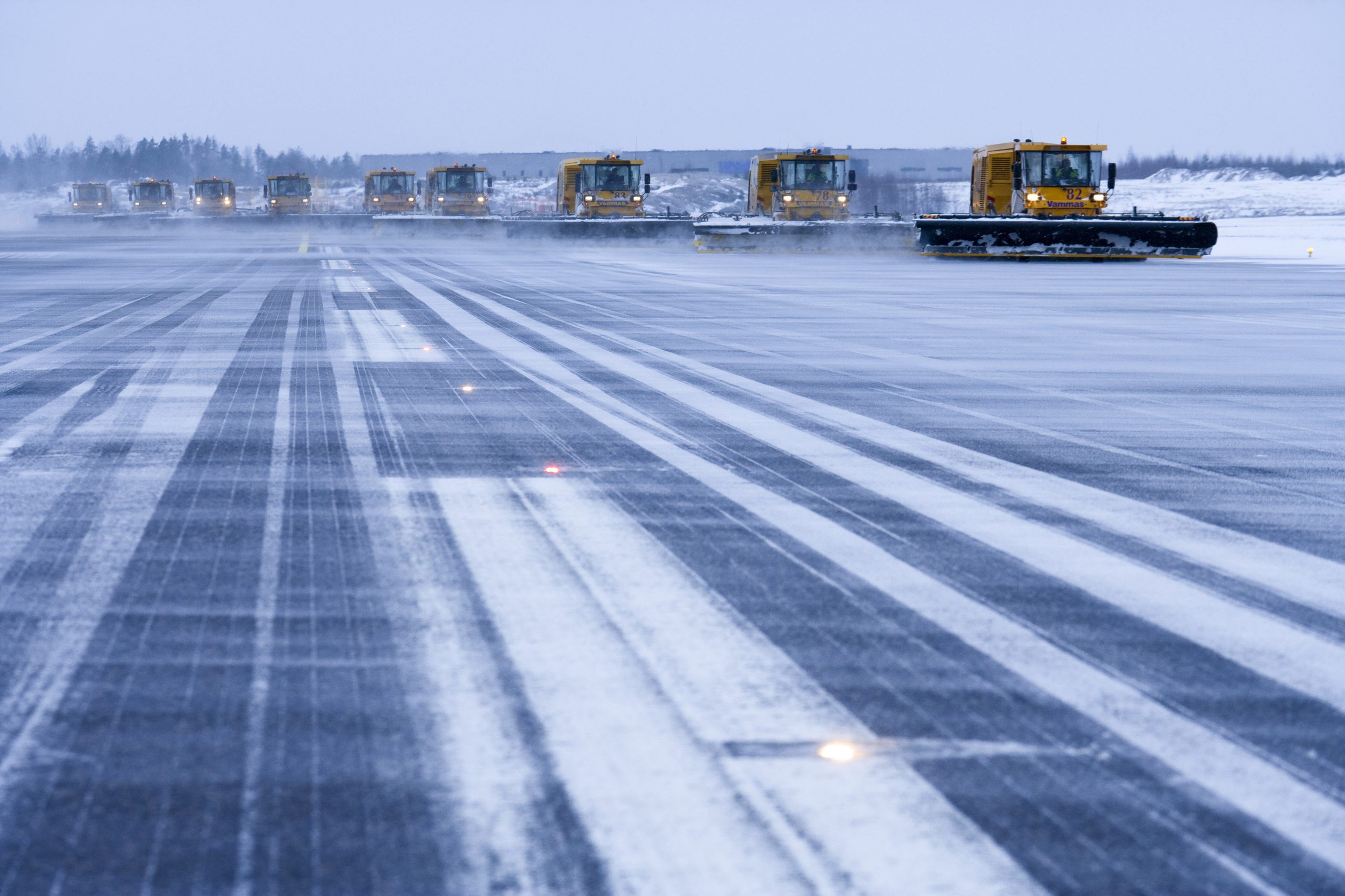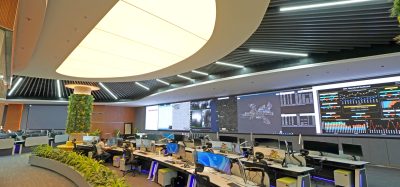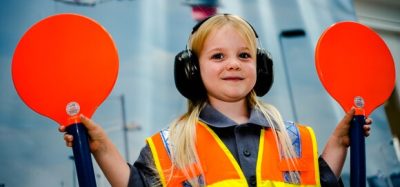Mastering winter skies: runway winter maintenance is like a carefully rehearsed dance routine
Posted: 26 December 2024 | | No comments yet
Pyry Pennanen, Head of Airfield Maintenance at Finavia’s Helsinki Airport tells International Airport Review why Finavia’s ‘snow-how’ is a matter of pride and honour.


Caption: For decades, Finavia has ensured that airports remain operational in any weather. This requires carefully practised steps, seamless co-operation, and solid expertise. Credit: Finavia Corporation.
Winter season in Finland begins in mid-October in Lapland and in November in the rest of the country. Winter season lasts until end of March, however, it is not uncommon to have new snow in April. On average, Finland is hit one to three times a year by challenging weather conditions that impact air traffic. Even during those times, flights depart and arrive regardless of the weather, although at a slower pace. Safety is never compromised.
“Our goal is safe and smooth air traffic in all weather conditions and all seasons. This requires our world-renowned snow-how,” says Pyry Pennanen, Head of Airfield Maintenance at Finavia’s Helsinki Airport.
It is no coincidence that Finavia’s snow-how is unique on a global scale. Snow-how entails, among other things, snow blowing and ploughing, sweeping and runway skid prevention.
“You could say that we are used to snowy and icy winters. But that is only part of the story. Snow-how is the combination of high professionalism of our employees, tailored equipment, years of experience in difficult weather conditions, continuous development and training, as well as excellent cooperation within the airport community,” he continues.
No solo performances in winter maintenance
Seamless co-operation between hundreds of professionals is required to keep the runways operational even in the middle of winter. What is particularly important is a continuous dialogue between air traffic control and maintenance.
“Working in the air traffic area must be extremely well-organised and you cannot go solo there. Therefore, it is important that air traffic control and maintenance are always aware of each other’s activities.”
“Sweeping patterns are like maps of the precise movements of the snow ploughs. They allow air traffic control to know up to 75 minutes in advance where the maintenance vehicles are at any given time. The air traffic control personnel plan traffic accordingly and make sure maintenance can work in peace. It is like a carefully rehearsed dance routine.”
These accurate and demanding patterns would not be possible without Finavia’s contractors and approximately 130 maintenance professionals with decades of winter maintenance experience. For them, snow-how is a matter of pride and honour.
“When a storm hits, everyone knows exactly what they are supposed to do. I am extremely proud of our professionals, and you can tell, that the more challenging the weather conditions, the better the attitude!”
Challenge against time and elements
When a storm hits, everyone knows exactly what they are supposed to do.”
Finavia’s snow-how has been developed over the years, especially in terms of methods. The runways are cleared of snow as soon as it is necessary. In addition to the weather, the maintenance shift supervisor monitors the condition of the runways and agrees with air traffic control the time when the runway clearing can be done.
For example, Helsinki Airport has a 13-minute window, co-ordinated with the air traffic control, to clear a 3,500m long and 60m wide runway in one go. For this to succeed, Helsinki Airport’s winter fleet consists of approximately 200 vehicles and machines and 135 maintenance employees trained in snow-how. Clearing one runway of snow takes approximately 11 minutes. Anti-icing agents are used to de-ice the runway.
If there is a lot of snow, it may take longer to load luggage onto or off the plane than in the summer. Airlines may have to de-ice the wings of aircrafts before departure, which increases departure preparations. When the snow is ploughed away from the runway, the runway in question is not in use by airplanes and they will have to wait their turn.
One of the most challenging elements is super-cooled water. When super-cooled water rains on a runway or the surface of an airplane, it freezes immediately. You can see the same phenomenon on your car’s windshield in winter. In winter, in addition to snow, we must also consider, among other things, wind direction and the amount of supercooled rain to adjust anti-icing agents in correct amounts.
Another challenging situation is when a blizzard is accompanied by damp freezing weather. That’s when aeroplane engines freeze, and airlines must de-ice the fan blades before taking off.
“Over the years, we have built a systematic and repeatable way of working with the airport community and today, we can clean up larger and larger areas faster, yet always keeping safety as the number one priority.”


Caption: The best way to ensure smooth cooperation is to have well-defined and carefully practised sweeping patterns, according to which snow is ploughed and slippery conditions are prevented on the runways.
Credit: Finavia Corporation.
Eye on the future
Anticipating weather changes and planning activities accordingly is continuous work. To excel in this, we get valuable help from expert organisations, such as the Finnish Meteorological Institute, which provides accurate, up-to-date information on weather phenomena influencing air traffic.
“We are informed well in advance of major snowstorms, for example. This allows us to ensure, together with maintenance, air traffic control and air and ground service companies, that we have enough people at work, and everyone in the airport community knows what to do,” Pyry explains.
Preparations for the next winter begin as soon as the previous one is over.
“In this line of work, you must think six months ahead. Preparations for the next season start already in May, with machinery maintenance as well as recruitment and training,” he concludes.
Helsinki Airport to pioneer hydrogen-powered heavy machinery
In 2023, Finavia joined the EU-funded BSR HyAirport project, becoming the first in Europe to pilot hydrogen as a power source for heavy airport machinery. The project aims to develop the hydrogen supply chain from production to fuelling airport equipment and aircraft.
Preparations are underway, and in 2025, Helsinki Airport will pilot a hydrogen-powered engine in heavy winter maintenance machinery. In this pilot, a traditional engine will be replaced with a piston engine burning green hydrogen and renewable diesel. This initiative addresses the high-power requirements of maintenance machinery that cannot be electrified.
Ensuring safe and smooth journeys through Finland’s winter skies
In the face of extreme winter conditions, Finavia has built a legacy of excellence in snow handling and winter operations. Through advanced equipment, meticulous planning, rapid response teams, real-time weather monitoring, comprehensive de-icing procedures and a commitment to sustainability, Finavia ensures that Finland’s airports remain operational and safe. This unwavering dedication to excellence sets a high standard for airport operations worldwide.
About the author:


Related topics
Accessibility, Airport development, Airspace modernisation, Biodiversity, Cleaner, Greener Airports: Making Aviation More Sustainable Series, Engineering, Green energy, Hydrogen, Innovation, Machinery, Maintenance, Operational efficiency, Recruitment and training, Runways and pavements, Safety, Sustainability, Sustainable development, Winter operations
Related airports
Related organisations
EU-funded BSR HyAirport project, Finavia, Finnish Meteorological Institute


















